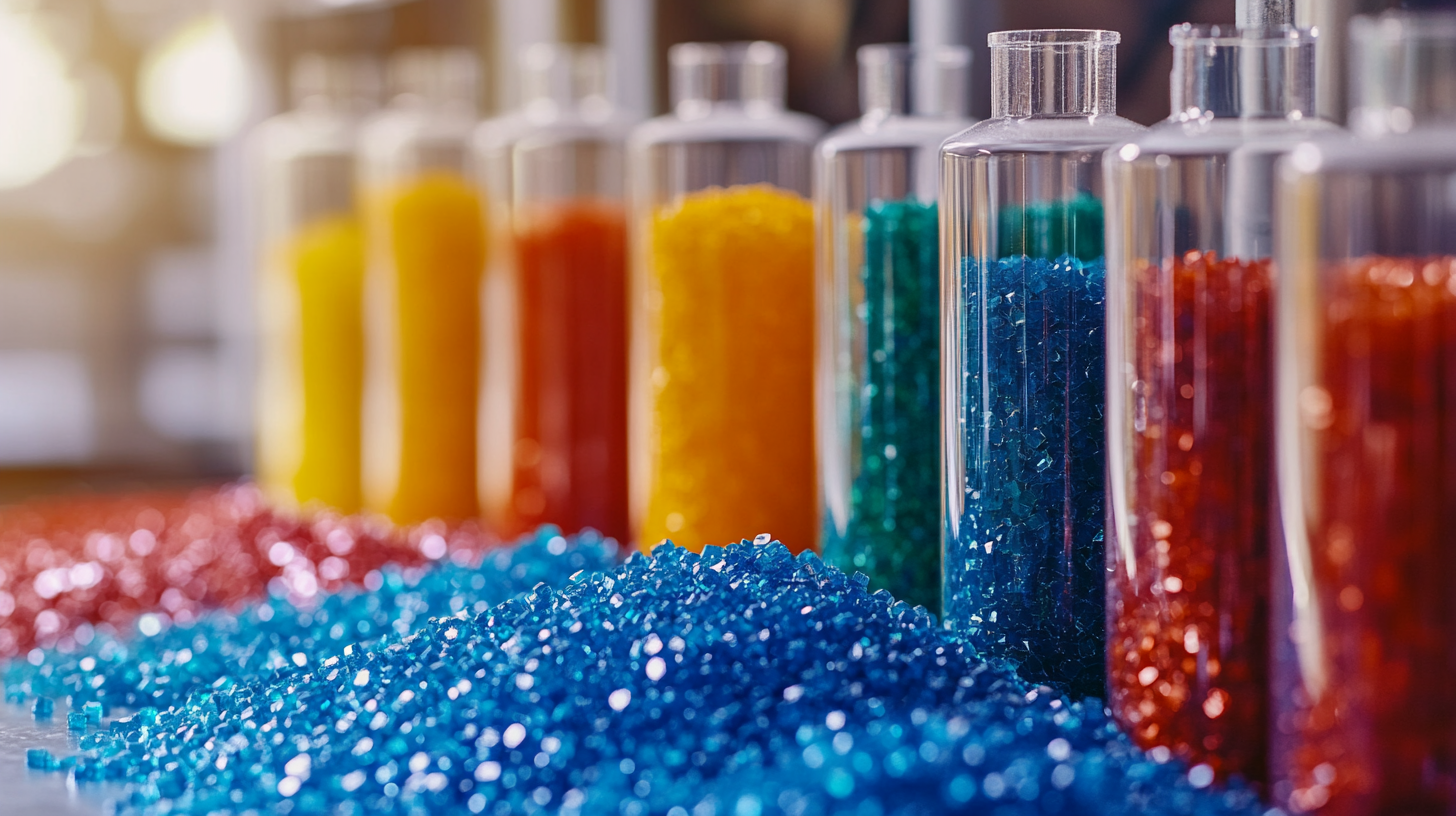New material is being developed continuously; C9 resin opens vital application approaches for many products such as adhesives, coatings, and ink/paint formulations. Specification of C9 resin becomes important for those global buyers who want to know more about selecting the most suitable product for their required needs. The demand is growing for high-quality C9 resin; thus, partnering with a reliable manufacturer of C9 resin becomes important to ensure conformity, purity, and international standards.
C9 resin specifications are quite complex and difficult to understand, especially for market novices. This page aims to enlighten readers regarding the many attributes of C9 resin and the most important buying tips. Discussion will dig into the chemical properties, physical features, and compatibility in applications of the resin, thereby passing very relevant insight toward effective procurement to the reader. With right knowledge, global buyers can form their procurement strategies and develop viable partnerships with those reputable C9 Resin Manufacturers that will enhance their competitive edge in different industries.

C9 is a versatile constituent in a variety of applications and possesses excellent properties with which manufacturers across the world consider it. It is formed mainly from aromatic hydrocarbons which come from petrochemical processes, and C9 resin is famous for excellent adhesion, low viscosity, and good thermal stability. As per a report published by Grand View Research, the global C9 resin market is supposed to reach USD 1.21 billion in revenue by 2025 with a CAGR of around 4.5%. Growing applications in the adhesives, coatings, and rubber line of industries are the key drivers of this growth. The glass transition temperature (TG) of this resin is typically in the range of 40°C-65 °C, which determines its compatibility with different polymers. The tackiness, hardness, and softening point, usually ranging from 100 to 120 °C, of C9 resin also contribute to the performance of the formulation. Approximately 35% of C9 resin goes into pressure-sensitive adhesives, as gathered by European Adhesive Manufacturers Association data. Another important characteristic of C9 resin is that it is chemically resistant, so it can be used outdoors, where it is supposed to be affected by environmental factors. According to Market Research Future, increasing demand for C9 resin profiles fueled by the growing focus on sustainable products also drives the demand for bio-based and eco-friendly C9 resin derivatives. All valuable properties and specifications should also be a consideration in attention to chemistry sourcing for buyers who require c9 resins.

Freezing, or synthetic resin, is obtained by polymerization, process of aromatic hydrocarbons, and has been applied greatly in several industries owing to the specialty properties. In adhesive applications C9 resin provides bond strength with temperature resistance that is ideal for construction adhesives and packaging materials, according to a report of MarketsandMarkets, the global adhesive market is anticipated to achieve a value of USD 50 billion by the year 2025 with applications in eco-friendly and high-performance adhesives where C9 resin is a major component.
C9 resin is also characterized by very high gloss and durability. This is required in the case of automotive and industrial applications as this resin can improve performance characteristics of coatings. In fact, this is being added even to formulations aimed at improving weathering resistance or aesthetic appeal. A report published by Grand View Research indicates that the global coatings market is expected to grow at a CAGR of around 4.6% from 2021 to 2028, a concerning factor given that it demonstrates a trend in growing demand for quality coating solutions using advanced materials such as C9 resin.
Also, the use of C9 resins in the rubber and plastics sector where they serve as plasticizers and modifiers, creating flexibility and toughness in end products. Interestingly, a report by Research and Markets, examining the opportunities that are starting to burgeon in the areas of global plastic additives market, predicts robust growth concerning all-inclusive gains owing to a continuous increasing focus over times on efficiency and performance, wherein C9 resins become a key player. C9 resin is well placed resourcefully to serve as a key component in creating new, flexible products that satisfy an ever-evolving consumer and regulatory standard as industry innovations continue.

In the endeavor of global sourcing of C9 resin, buyers must navigate an intricate web of factors. The resin market has seen important transformations in recent times, in part because of consolidation in the industry and the changing needs of the print markets. These dynamics are consequential in enabling buyers to make a well-informed choice about procurement. The buyers would be wise to watch for factors such as the stability of supply and production capabilities, especially since mergers and acquisitions will change the availability and price structure.
It is also good to check the quality specifications of the C9 resin to ensure it meets the requirements of an application. Any variations in resin formulation can reflect performance, so buyers must stipulate what they need before accepting an order. Asking suppliers about their quality management will help mitigate the risks of buying substandard products.
Another factor to consider is the sustainability in resin production. These days, sustainability is high up on the mind of the buyer with regard to environmental considerations, so there must be a deliberate effort to seek suppliers with sustainable ethos. In this line, the life cycle of the resin must be assessed, from how it is produced to how it is disposed of at the end of its life. Consideration of these factors can assist global buyers in improving the sourcing strategies to find sustainable, dependable, and high-quality resolutions of C9 compatible with their business tenets and market needs.

C9 resin is the most important raw material and precursor for different plastics. With respect to that, the resin has become a point of considerable interest, as well as in relation to the changing regulatory landscape regarding the production and disposal of plastics. Testing and quality control procedures involved in C9 resin must be essential for all global buyers, especially now that stringent new environmental regulations become effective beginning July 1, intended to ameliorate pollution and improve ecological quality. Of course, effective testing would assist in proving not only specified quality-specified limits but also in meeting the drastically enhanced environmental norms reshaping the industry.
Plastic production will become increasingly sustainable as customers seek buying circles of C9 resin sourced from environmentally sustainable suppliers. This means that strict quality control processes should be established to measure the resin's impact on recycling and biodegradability in addition to chemical composition. Gas chromatography and infrared spectroscopy are testing techniques used to establish the purity and composition of C9 resin as needed safety, quality, and environmental standards.
Moreover, there is an increasing relevance concerning the circular economy from both the manufacturers' and consumers' sides. Through responsible use of C9 resin and advocacy for recycling programs, the industry can help improve how plastics are consumed sustainably. Understanding how quality, testing, and environmental impact fit together will therefore be crucial in helping global buyers decipher the minefield of resin specifications because market demands have to be met alongside eco-friendly practices.
The C9 resin demand on the global stage, in past months, has undergone a lot of fluctuations; all the while, different economic variables, such as raw material costs and market dynamics, seem to be having a firm hold on this behavior. As per the current industry reports, the pricing behavior for C9 resin is closely linked with crude oil prices, which have come under undue pressure having undergone volatility over the past few months owing to tensions in geopolitics as well as production adjustments by OPEC. This trend implies buyers must be very vigilant, as fluctuations in the crude oil price could affect C9 resin prices to a great extent, crude oil being priced at about $70/barrel at the beginning of April 2025.
With regard to costs, buyers should factor in shipping and logistics costs, which have soared due to global supply chain disruptions. Recent data indicate the growing transportation costs have had a 15% effect in the past year, directly impacting the C9 resin pricing scene. Therefore, prospective buyers should consider quotes offered by suppliers beyond just unit price but also in the context of total landed costs so that they can make informed purchasing decisions.
Market analysts further anticipate that as the economy continues its slow but steady recovery, variable interest rates may also influence the resin market. For instance, in the mortgage industry, the interest rates have just ticked downward, and there could be signs pointing to similar interest rate behavior throughout other industries, stabilizing C9 resin prices if consumer demand escalates along with the economic improvement. Buyers must keep their ear to the ground on the signals so that they are versed in making their acquisition strategy while positioning themselves to ride the dynamic waters of this commodity.
C9 resin is a type of synthetic resin derived from the polymerization of aromatic hydrocarbons.
C9 resin is used across multiple industries including adhesives, coatings, rubber, and plastics.
C9 resin provides excellent bonding strength and temperature resistance, making it ideal for construction adhesives and packaging materials.
The global adhesive market is projected to reach USD 50 billion by 2025, with a focus on eco-friendly and high-performance adhesives that include C9 resin.
C9 resin enhances gloss and durability in coatings, which is beneficial for automotive and industrial applications, improving weather resistance and aesthetics.
In the rubber and plastics sector, C9 resins are used as plasticizers and modifiers to improve flexibility and resilience in end products.
The global coatings market is expected to grow at a CAGR of 4.6% from 2021 to 2028, indicating a rising demand for high-quality coating solutions.
C9 resin is pivotal in the plastic additives market, contributing to the improvement of efficiency and performance of plastic products.
C9 resin's versatility comes from its ability to enhance various product characteristics across multiple industries, helping meet consumer expectations and regulatory standards.
C9 resin is integral to developing eco-friendly and high-performance products that align with evolving consumer and regulatory demands.